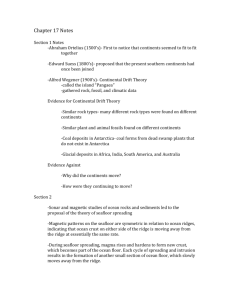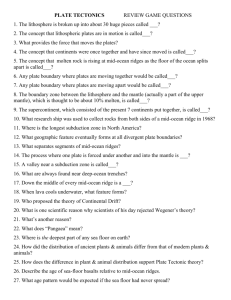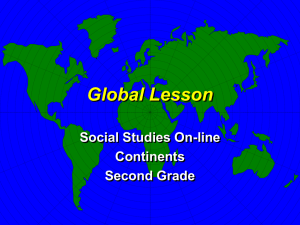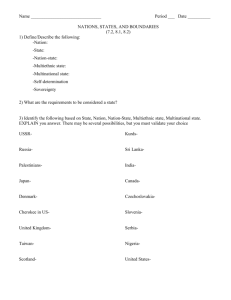Assessment Volcano Earthquake
advertisement
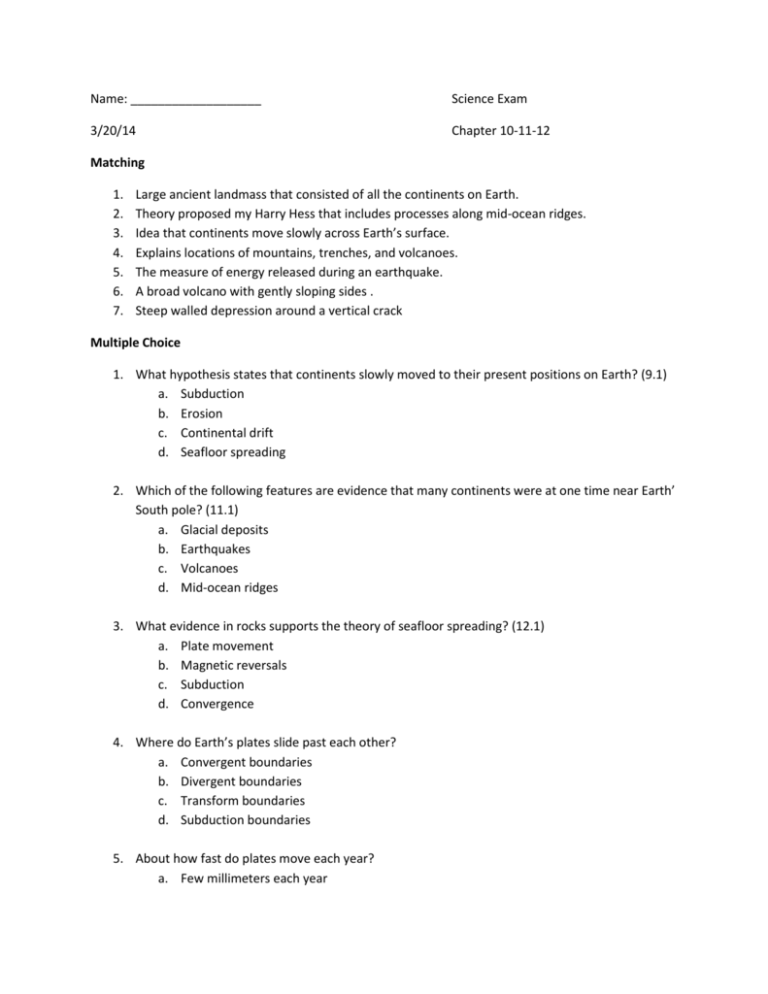
Name: ___________________ Science Exam 3/20/14 Chapter 10-11-12 Matching 1. 2. 3. 4. 5. 6. 7. Large ancient landmass that consisted of all the continents on Earth. Theory proposed my Harry Hess that includes processes along mid-ocean ridges. Idea that continents move slowly across Earth’s surface. Explains locations of mountains, trenches, and volcanoes. The measure of energy released during an earthquake. A broad volcano with gently sloping sides . Steep walled depression around a vertical crack Multiple Choice 1. What hypothesis states that continents slowly moved to their present positions on Earth? (9.1) a. Subduction b. Erosion c. Continental drift d. Seafloor spreading 2. Which of the following features are evidence that many continents were at one time near Earth’ South pole? (11.1) a. Glacial deposits b. Earthquakes c. Volcanoes d. Mid-ocean ridges 3. What evidence in rocks supports the theory of seafloor spreading? (12.1) a. Plate movement b. Magnetic reversals c. Subduction d. Convergence 4. Where do Earth’s plates slide past each other? a. Convergent boundaries b. Divergent boundaries c. Transform boundaries d. Subduction boundaries 5. About how fast do plates move each year? a. Few millimeters each year b. Few centimeters each year c. Few meters each year d. Few kilometers each year 6. Earthquakes can occur when which of the following is passed? a. Tension limit b. Seismic limit c. Elastic limit d. Shear limit 7. What are the slowest seismic waves/ a. Surface b. Primary c. Secondary d. Shear 8. What kind of earthquake waves stretch and compress rocks? a. Surface b. Primary c. Secondary d. Shear 9. Which of the following volcanoes is located in the United States? a. Hekla b. Paricutin c. Mount Vesuvius d. Mount St. Helens 10. Which of the following forms when the top of a volcano collapses into a partially emptied magma chamber? a. Fissure b. Crate c. Caldera d. Volcanic rock 11. a. 12.


